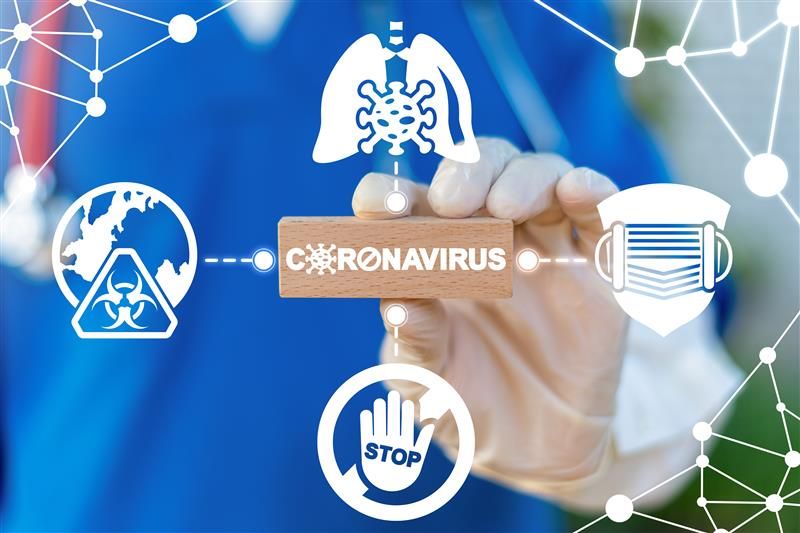Coronavirus Could Have Reached US in January
New findings from the CDC show community transmission may have begun in the Pacific Northwest a full month before the first confirmed case.

New data from the US Centers for Disease Control and Prevention (CDC) COVID-19 Response Team showed US community transmission of coronavirus 2019 (COVID-19) had begun in late January or early February 2020, following a single importation from China and multiple importations from Europe.
The findings, which supplant previous data confirming the first US cases of nontravel-related COVID-19 at the end of February, highlight the particular difficulty US public health agencies had in tracing initial spread of the virus.
In a new CDC Morbidity and Mortality Weekly Report (MMWR), members of the COVID-19 Response Team—led by Michelle A. Jorden, MD, of the County of Santa Clara Office of the Medical Examiner-Coroner in San Jose—provided details of a dimensional assessment of US-based community transmission of the coronavirus.
Jorden and colleagues used syndromic surveillance, virus surveillance, phylogenetic analysis, and retrospective assessment of previously reported incidences to observe absolute initial COVID-19 infection in the country.
Until late February, they noted, incidence of the virus as per COVID-19-like illness was too low to be detected by emergency department-based syndromic surveillance efforts.
The team used the quartet of available surveillance data to interpret earlier infections. Syndromic surveillance, as per the National Syndromic Surveillance Program, provided real-time emergency department data from approximately 4000 healthcare facilities across 47 states.
Virus surveillance, via RT-PCR-specific testing conducted in the Seattle Flu study starting in late February, allowed for early positive laboratory results of SARS-CoV-2—as well as retrospectively-tested specimen from another 2 flu vaccine effectiveness studies conducted in the US.
Phylogenetic analysis, used to assess SARS-CoV-2 genomic diversity from early cases observed in the Seattle area, found a majority of confirmed viruses belonging to the same clade in Washington state; the most recent common ancestor of that clade was estimated by investigators to have existed approximately between January 2018-February 9.
“The predicted genomic sequence of that progenitor virus was consistent with that from the first US case of imported COVID-19, which occurred in a man who arrived in Seattle from Wuhan, China, on January 15 and became ill 4 days later,” investigators wrote.
However, they added, it is possible the clade arose from a similar or identical-sequence virus from another SARS-CoV-2 infected person.
“Analysis of viruses in California and the northeastern United States from February through mid-March suggested that there had been several importations of virus, primarily from Europe, followed by transmission of virus within the United States,” they noted.
There are currently 2 deceased patients with confirmed COVID-19 who had no relevant travel history prior to February 26 observed in Santa Clara County alone.
Additionally, genomic sequence analysis suggests a passenger or crew member aboard a Grand Princess cruise ship when it left the Port of San Francisco on February 11 was infected; the identity of this person is still unknown.
Jorden and colleagues observed these findings indicate that the earliest known community transmission of the virus occurred between late January and early February, after being imported from China. That virus’ lineage initiated the Washington State clade, which spread throughout the Seattle area and potentially even further.
Subsequently, multiple importations from Europe to the US occurred in February and March.
Though the retrospective findings may be undone or postdated be other ongoing analyses into the start of US-based COVID-19 community transmission, investigators emphasized their results show the need for robust public health systems that are capable of responding rapidly to infectious threats—not when they have already spread, but when they have begun to.
Syndromic surveillance, particularly in emergency departments, has since increased—aiding clinical understanding of SARS-CoV-2 activity and increasing the availability of testing for the virus. But all must continue to play a role in lessening the pandemic.
“Given the probability that most of the US population is still susceptible, sustained efforts to slow the spread of the virus are crucial, including effective contact tracing and nonpharmaceutical interventions, such as physical distancing and source control (i.e., wearing cloth face coverings),” they concluded.
2 Commerce Drive
Cranbury, NJ 08512
All rights reserved.
